Culture
Perilous Professions of the 20th Century
Published
11 months agoon
The well-known phrase “it’s a tough job but someone has to do it” can be applied to the hazardous and daring occupations of the 20th century, which we have meticulously documented here. Regardless of the dangers involved, people have always placed a high value on supporting their families. They were willing to enter professions that exposed them to daily risks. Both men and women throughout history have eagerly embraced challenges in order to achieve greatness. Whether they were involved in the construction of the Eiffel Tower or the creation of groundbreaking products that have revolutionized our lives today, they faced difficult situations head-on and emerged as stronger individuals. Have you ever wondered how well you would have fared in these perilous jobs of the 20th century? Let’s continue moving forward.
Is there a sound when a tree falls in the forest?
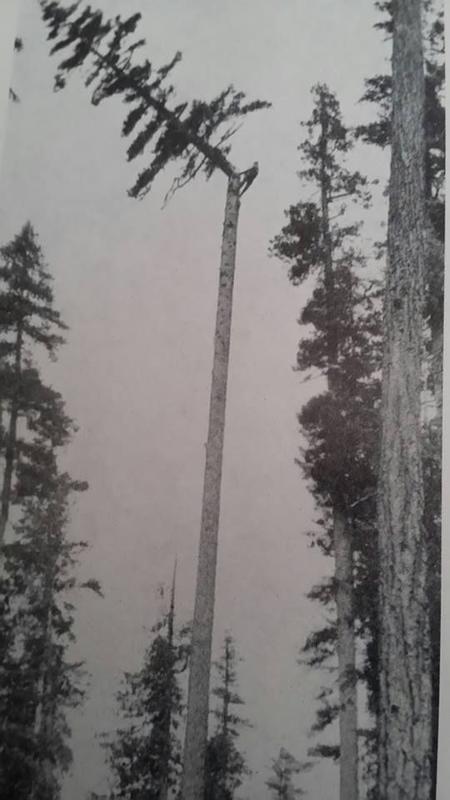
Pinterest
Tree trimming is necessary for various reasons, including ensuring a safe distance from power lines and maintaining the overall health of the tree. However, it is crucial to approach tree trimming with caution and adopt suitable techniques due to the potential hazards involved. Tree trimmers are at risk of being injured by falling branches or their own tools. Moreover, if trimming is not performed correctly, it may weaken the tree, making it prone to branch breakage or even collapse, despite its outwardly strong appearance.
Lack of Protective Gear in 1938 Hat Manufacturing Job Puts Man at Risk of Mercury Poisoning
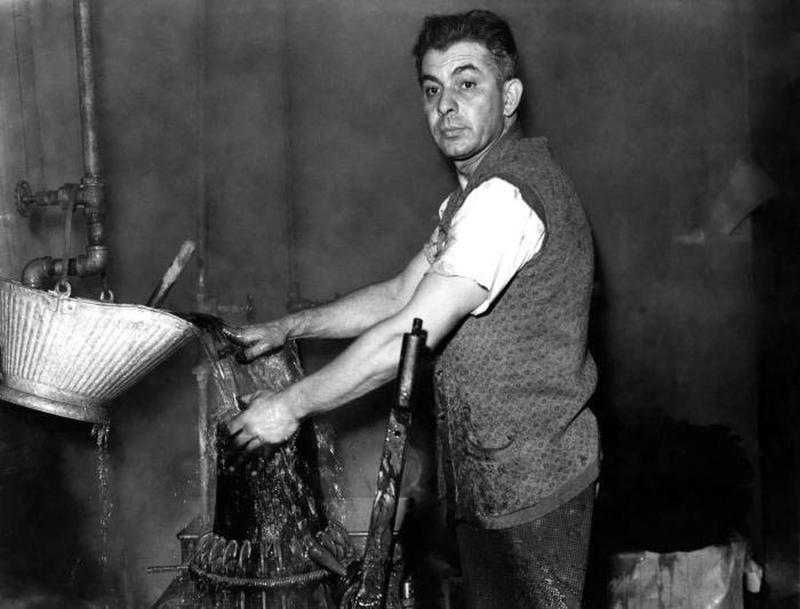
Google
Despite its reputation as a safe occupation, hat-making turned out to be surprisingly dangerous. Hatters used a technique called carroting, where they would wash felt with a solution containing mercury nitrate. This exposed the workers to toxic mercury vapors in the air. Mercury is well-known for its harmful effects on the nervous system, causing symptoms like drooling, hair loss, twitching, and cognitive impairments. In severe cases, victims even experienced hallucinations. The United States finally banned the use of mercury in felt manufacturing in 1941.
Deep-Sea Diver’s Remarkable Aerial Accomplishments in 1915
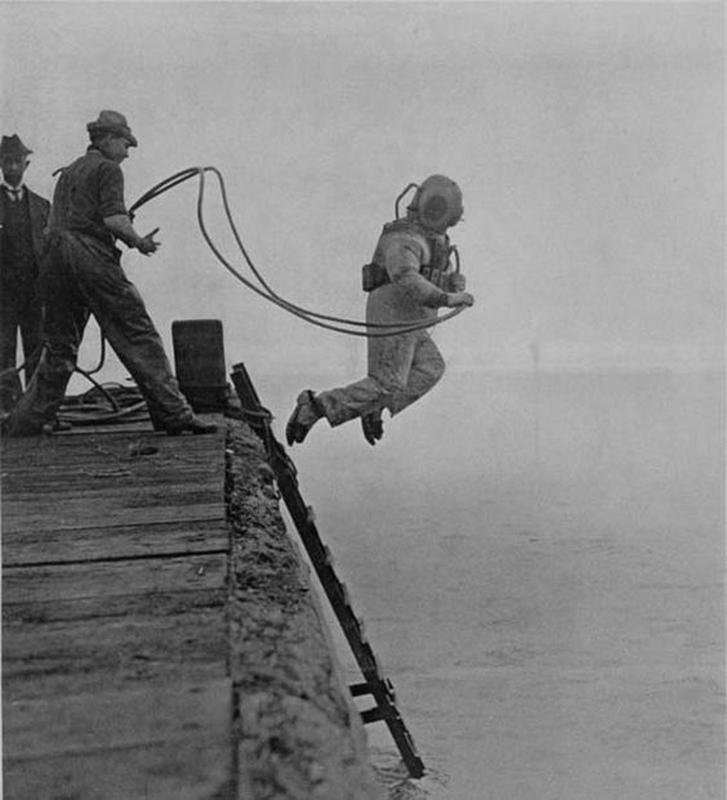
Pinterest
Diving in the oceans has been practiced since ancient times, when people ventured into the depths in search of food and resources. Despite not being seen as highly dangerous, there are hidden risks below the water’s surface. Usually, our minds immediately think of sharks when we think of dangers in the ocean. However, the biggest hazard actually lies in something we rarely consider on land: oxygen. When diving, it is essential to remember to breathe naturally and avoid holding one’s breath to prevent decompression sickness. It is crucial to ascend at an appropriate rate as you rise and the pressure changes.
Potential for Tragedy or Notoriety: Mail Delivery by Plane in 1918
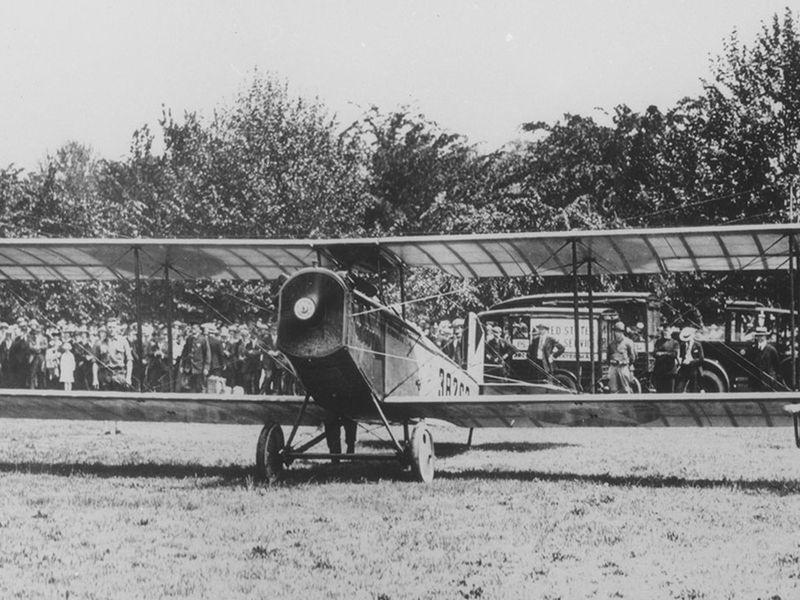
Smithsonianmag
In the past, our amusement was centered around the dangers that dogs posed to mail carriers. However, back in the early days of aviation, the actual delivery of mail by plane was the real concern. From 1918 to 1927, a total of 230 people used Jenny aircraft to transport mail. Unfortunately, 32 of these pilots lost their lives in plane crashes. These early flights were only possible during the day due to limited visibility. The first aviator relied solely on a map on his lap for navigation. Despite the risks involved, young men remained undeterred and continued to pursue this occupation. Their determination was inspired by witnessing the recognition Jack Knight received for his daring nighttime journey to deliver mail to Chicago.
Jet fighters adapt to the wilderness environment

Pinterest
The notion of becoming a jet fighter pilot is often linked to a thrilling rush of adrenaline, largely influenced by Tom Cruise’s portrayal. However, this occupation holds genuine hazards. Surprisingly, the most dangerous aspect does not involve enemy fire, as one might expect. Instead, the act of ejecting from an aircraft carries a one-in-ten chance of fatality, with injuries being almost inevitable. Additionally, pilots must refuel in midair due to limited carrying capacity and the need for sufficient fuel, which presents another risk: collisions with birds. Moving at high velocities, a bird strike can have severe consequences. Although death is unlikely, the pilot may sustain injuries from the impact.
Effortlessly and Nonchalantly, London Telephone Engineer Attaches Phone Cable 50 Feet Above Ground
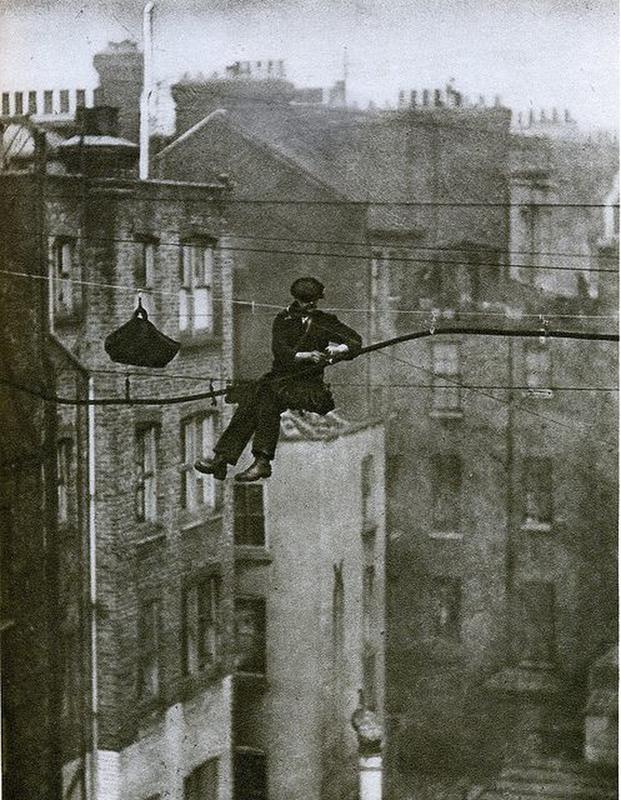
Pinterest
Although telephone wire installers may seem to have a highly dangerous job, it is actually less perilous than it appears. The task of connecting telephone wires, which often involved spanning bodies of water, was one of the most challenging aspects of establishing telephone networks. To accomplish this, workers would sit in a bo’sun’s (or boatswain’s) chair suspended at a height of 50 feet. Initially, these chairs were made from a basic plank or a durable piece of canvas. Despite the daunting nature of their work, telephone wire installers manage to facilitate global connectivity with relative safety.
Glow-in-the-Dark Radioactive Paint Leads to Radiation Poisoning in ‘Radium Girls

Pinterest
Marie Curie revolutionized scientific knowledge in the 1890s with the discovery of radium. In World War I, the United States Radium Corporation recognized an opportunity and began recruiting working-class girls for employment. These girls were enticed with wages that exceeded three times the average factory job. Their main duty involved applying radium paint onto watch faces, which ultimately led to an eerie glow on their own bodies at the end of their shifts. Some went to extremes by painting their clothes and even their teeth. Unaware of the dangers, these girls unintentionally consumed small amounts of radium every time they followed the painting technique they were taught. Shockingly, the corporation neglected to inform them about the hazardous consequences of such exposure. Tragically, over time, the radium girls fell ill and eventually succumbed to their illnesses.
Coal Sorters Opting to Work Instead of Attending School
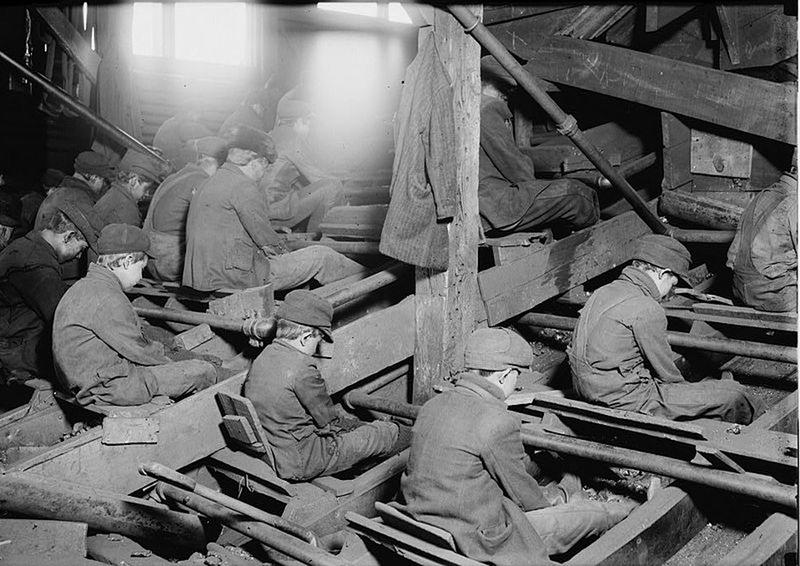
Pinterest
Anthracite coal, although safer than bituminous coal due to its hardness and longer burning time, still poses risks during extraction. Similar to regular coal, it requires mining from the earth and presents hazards for workers including tunnel collapses, explosions, and injuries. Young “breaker boys” who were tasked with removing rock fragments from the coal often suffered from bloody fingers. Furthermore, like those working with bituminous coal, there was a constant risk of contracting black lung disease.
Brave Steel Riggers in New York Continue Working, Despite Feeling Isolated at the Summit

Pinterest
Originally derived from sailing ships, the term “riggers” now refers to people who are responsible for using rigging, which includes thick ropes, to hoist sails. While rigger is still used in the context of sailboats, it now encompasses anyone involved in lifting heavy objects. These individuals secure loads to cranes and structures and use chains, winches, lifts, cables, and similar tools to elevate objects. They must quickly make calculations and utilize various suspension techniques to expertly navigate obstacles while moving their load. Due to the heavy weight of the objects they handle and the challenging environments they work in, riggers face the risk of getting injured.
Experienced truck driver proudly displays his favorite vehicle

Pinterest
During the 1970s, there was a romanticized view of the trucking profession, suggesting that it was an enjoyable way to earn extra income. However, this idealized perception is far from the truth. Truckers have become known as the rebels of the road, but this reputation stems from their need to bend the rules slightly in order to ensure the prompt delivery of their cargo. Whether it involves driving through the night or overtaking slower vehicles, truckers are determined to reach their destinations on schedule. This dedication to punctuality can be risky, and many drivers who push their limits may ultimately suffer the consequences of their own ambition.
Courageous Individuals Needed to Fell Redwoods during the Early 1900s

Pinterest
Redwood trees are renowned for their massive size and long lifespan, making them some of the largest and oldest living things on Earth. In addition to their remarkable durability and ability to withstand fires, these trees have been highly prized for their wood. The demand for redwood timber skyrocketed after the 1906 earthquake, which caused extensive damage to San Francisco. However, obtaining the most sought-after part of the tree, the top, proved to be a major challenge. In the early days, loggers constructed scaffolds and inserted boards into the tree’s sides to create a stable platform for cutting. After the tree was brought down, the bucker would remove the branches and divide the tree into manageable sections. Then, the peeler would meticulously strip off the bark. Although the tools they used were dangerous, the immense size of the trees magnified the risks involved in this arduous process.
Surprising Surprise Awaits Overhead Powerline Workers in Nagoya, Japan in 1952

Pinterest
The vital role of overhead powerline workers in maintaining our electricity often goes unnoticed, despite their heroic efforts. Despite numerous regulations put in place to protect these workers, studies show that a significant number of injuries and fatalities due to electrocution still occur among them. Shockingly, the death rate in this profession stands at around 17 to 23 per thousand workers over a period of 45 years. While electrocution is the most obvious risk, there are also other hazards to consider. Falls, getting struck by falling objects, burns, over-exhaustion, and a multitude of potential dangers like sprains, cuts, and contusions can result in fatalities and injuries.
The George Washington Bridge: A Fatal Connection between New York and New Jersey
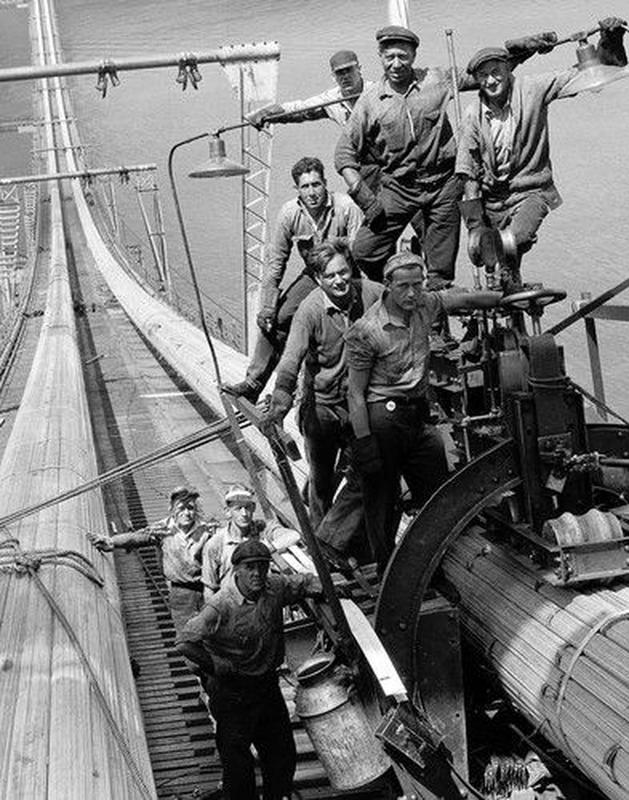
Pinterest
The George Washington Bridge, an impressive engineering marvel that connects New York and New Jersey, was meticulously designed over the course of a century by Othmar Ammann. Construction on the bridge began in 1927, starting with the challenging task of building the two towers, located 75 feet below the water level. Sadly, the early stages of construction were marred by tragedy. Three individuals lost their lives when the coffer dam collapsed, resulting in their drowning as the powerful force of the Hudson River was unleashed. Another worker also met a grim fate due to an explosive being improperly placed in the Palisades rock. Perhaps the most widely known deaths occurred when three men accidentally fell into the liquid concrete being poured, becoming permanently entombed.
Daring Photographer Charles Clyde Ebbets Risks Life to Capture Flawless Shot
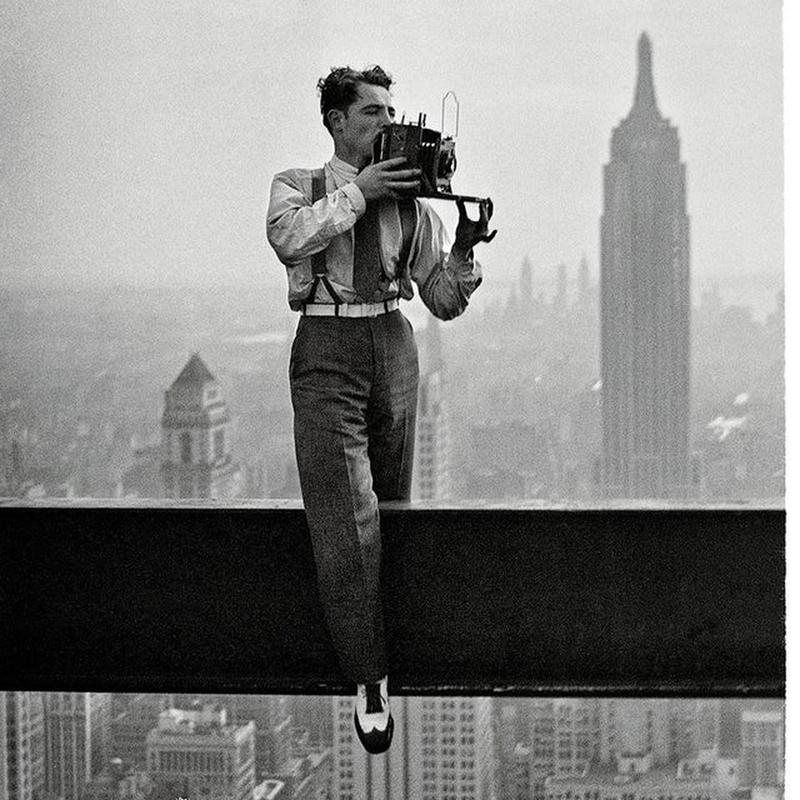
Pinterest
Clyde Ebbets, a well-known photographer, gained fame for his published work in major newspapers. One of his most famous photographs, called “Lunch Atop a Skyscraper,” was taken in 1932 on the 69th floor of the RCA building that was still being constructed. This image, which showed eleven men casually sitting on a beam with their legs hanging, became widely circulated worldwide. Later, Ebbets moved to Florida, where he focused on capturing images that highlighted the state’s thriving tourism industry. He documented the aftermath of the destructive 1935 Labor Day hurricane that caused chaos in the Keys and was also given permission to photograph the Sacred Green Corn Dance of the Seminole Indians. Unfortunately, Ebbets hurt his back while taking photos in the Everglades.
Garthsnaid sailors challenge traditional notions of sea sickness
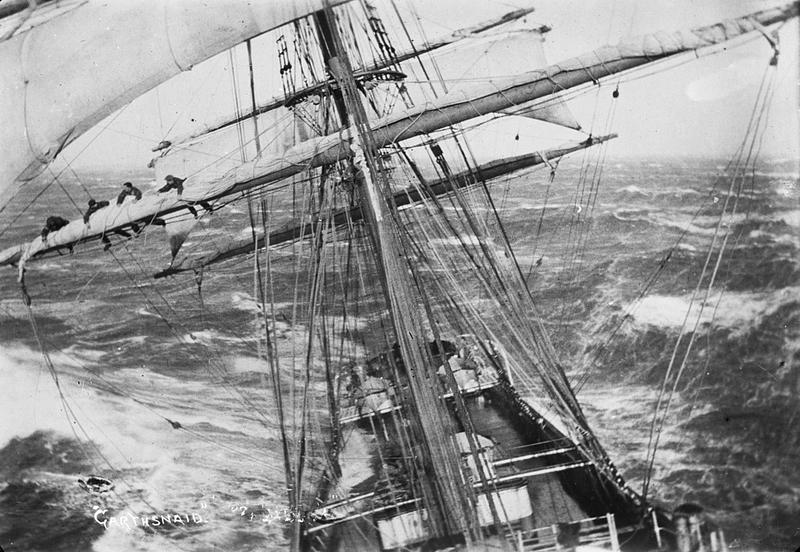
Pinterest
Sailing is commonly regarded as a hazardous sport, and these dangers are also present when working on a sailing ship. The perils become even more apparent when facing severe weather conditions. The constant motion of the sailboat exposes the risk of falling off the ship’s deck, and there is also the potential for injury from falling within the vessel itself. Additionally, as the ship sways, there is a chance that an unsecured heavy object could become dislodged and cause harm to a passenger. While most sailing fatalities occur due to drowning, it is important to mention that many of these deaths could have been prevented if the individuals had worn lifejackets.
Bethlehem Steel Workers Bid Farewell on October 1983, Concluding Their Work
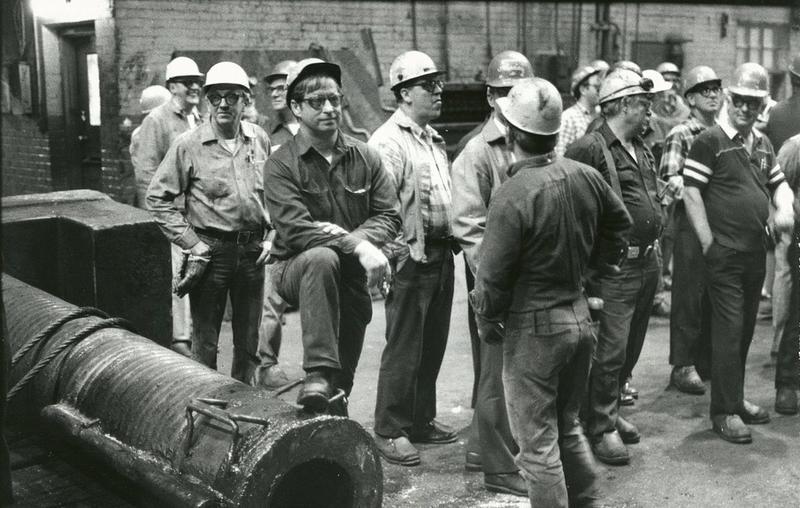
Pinterest
In the present time, we are now well aware of the dangers associated with asbestos in housing materials. To prevent any potential exposure, we now hire contractors to remove it from our homes. Unfortunately, steel workers, who were already involved in dangerous jobs, were unknowingly exposed to this cancer-causing substance. Asbestos, a mineral found naturally in soil and rocks, becomes hazardous when it is released into the air and inhaled, leading to the development of lung cancer. Within the steel mills, asbestos was used as insulation for machinery and equipment, and was also included in protective clothing and certain building materials, such as tiles used for the mills themselves.
Two employees in awe of their achievements, gazing at the Empire State Building from a height of 1,000 feet

Pinterest
The Empire State Building, an iconic 86-story structure, was constructed by a team of 3,400 courageous men who were unafraid of heights. This diverse team comprised workers of European descent and Mohawk workers, with the latter being particularly fearless when it came to working at extreme elevations. The construction of this monumental building commenced on March 17, 1930, and reached completion on May 1, 1931. Despite the building’s status as the tallest in the world at the time, working on its construction carried a significant risk of fatal accidents. Astonishingly, official records indicate that only five workers tragically lost their lives during the construction process. Fortunately, an extensive collection of photographs taken during the construction offers those of us who are unwilling to scale such heights a glimpse into the experiences of these workers.
Harmonica Melodies Fill the Air as Workers Serenade Construction of Rockefeller Center Skyscraper in 1932 New York City
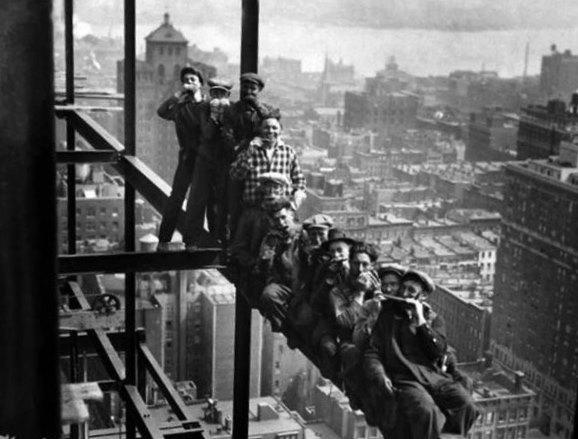
Pinterest
Working at significant heights can induce a tremendous amount of stress. The construction of skyscrapers presents a multitude of logistical hurdles to overcome. Some of these challenges have straightforward resolutions, while others are considerably more intricate. For instance, a well-known image depicting laborers having their lunch suspended in mid-air exemplifies one of the more complex predicaments. Moreover, it becomes essential to discover methods of reducing stress. In this specific scenario, a team of workers opted to pause their work, unwind, and appreciate the awe-inspiring sights of Manhattan while playing harmonicas on a steel beam.
Bronx-Whitestone Bridge Painting Limited to Favorable Weather and Calm Wind Conditions
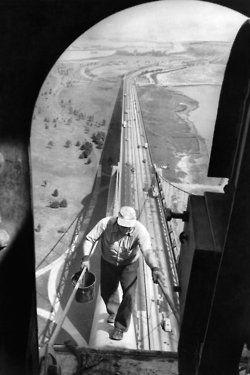
Pinterest
Not only is constructing a bridge difficult, but it also requires regular maintenance. The Bronx-Whitestone Bridge, which opened in 1941 and had a similar design to the Tacoma Narrows Bridge in Tacoma, Washington, faced public concern after the collapse of the latter. To address safety concerns, the Bronx-Whitestone Bridge underwent modifications, including the installation of two steel cables to reduce oscillation and potential failure from strong winds. In 1953, the bridge was painted for the first time in six years, with the painters having to work under specific conditions to minimize risks. This layer of paint acted as protection, preventing the steel from corroding. However, unlike the Golden Gate Bridge, which requires almost constant painting, the Bronx-Whitestone Bridge is not as demanding in terms of maintenance.
Determined Portland Stove Foundry Worker Goes the Extra Mile to Overcome the Heat
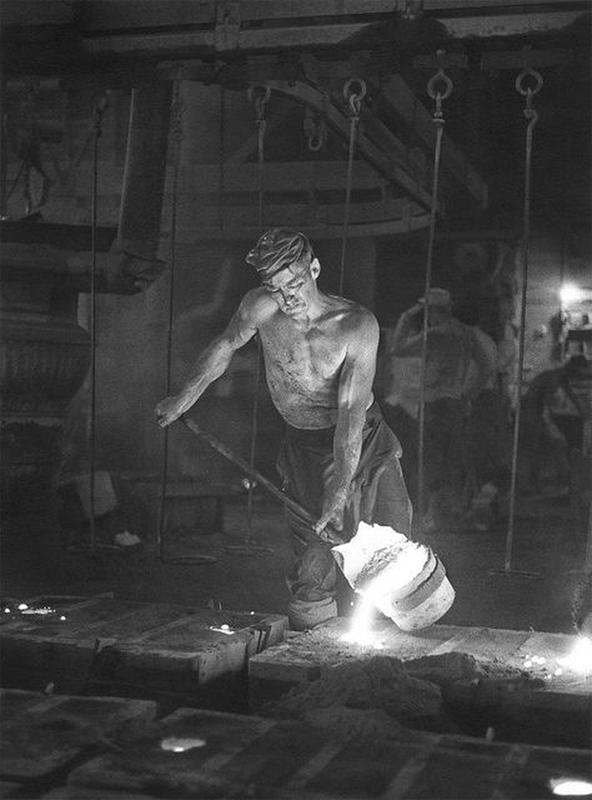
Pinterest
The foundryman’s role in manufacturing construction beams and vital everyday tools is both vital and hazardous. While some dangers in a foundry are obvious, such as working with molten metal, there are also unseen risks. Foundry workers are exposed to different chemicals and airborne substances that may not be readily noticeable. Despite efforts to increase awareness and minimize exposure to these chemicals, foundry workers still face the potential of developing conditions like lung cancer and other diseases due to prolonged exposure.
Chimney Sweeps’ Fortunate Escape from Carcinoma
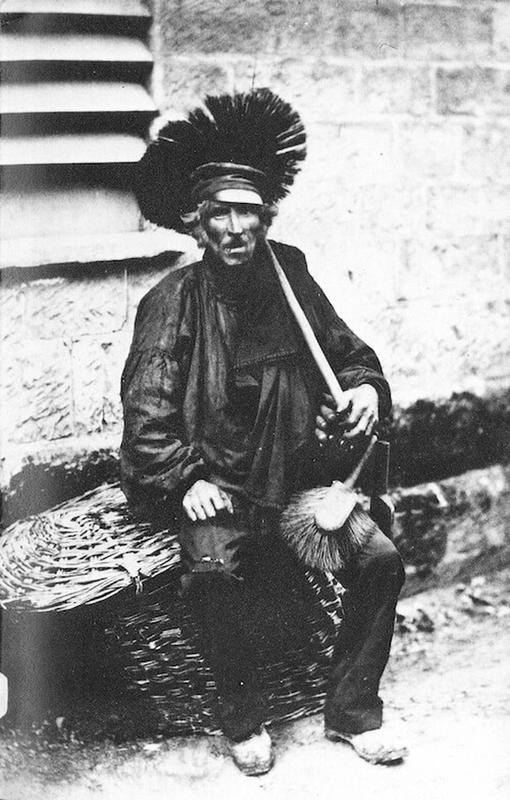
Google
While it may be delightful to envision Santa Claus effortlessly sliding down each chimney during the month of December, the occupation of a chimney sweep lacks the same magical appeal. The term “chimney sweep” evokes images of dirty faces covered in soot, yet this profession involves more dangers than just dirty skin. Inhaling soot presents a constant respiratory hazard, potentially leading to illnesses and infections. Furthermore, direct contact with soot can result in skin irritations, rashes, and infections. Additionally, exposure to creosote can cause visual impairments as a result of chemical burns. However, chimney sweeps today continue to fulfill an essential role, thanks to their proper training and implementation of safety measures.
Hope for Friendship Among Individuals Involved in Bulletproof Vest Test
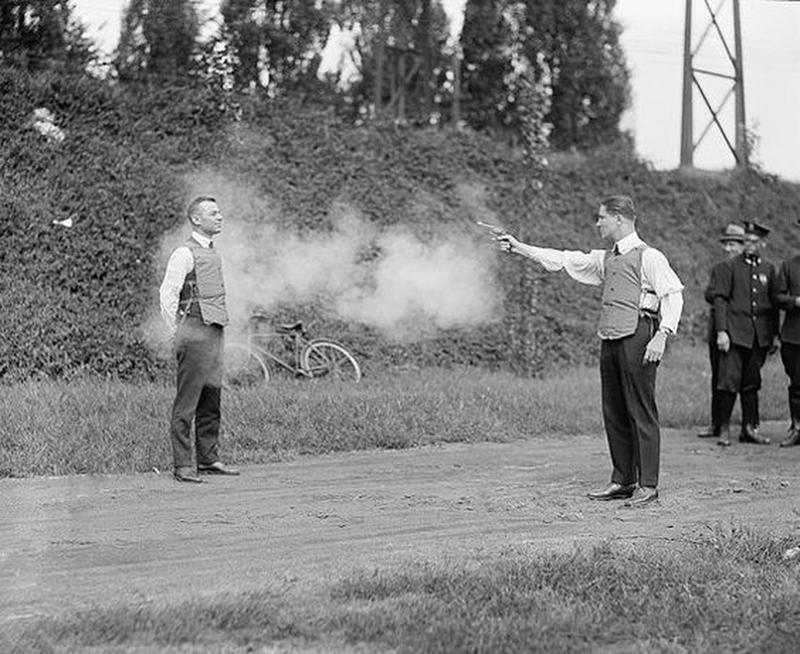
Pinterest
Following the assassination of McKinley in 1901, the Army decided to adopt soft body armor. At first, they conducted trials with silk, but soon discovered that it was ineffective against high-speed bullets. Consequently, they persisted in their efforts to develop lightweight and efficient bulletproof clothing. Testing played a vital role in determining the effectiveness of the newly created bulletproof vests. Once the vests were deemed ready, they needed to be sold, which required demonstrating their ability to protect against bullets. This involved an officer shooting at an individual wearing the vest to showcase its protective capabilities. While no fatalities occurred during these demonstrations, there was still a risk of injury, as no material is completely bulletproof, but rather more resistant to bullets.
Man Discovers Happiness in Savoring Tea While Maintaining Balance on Construction Beam
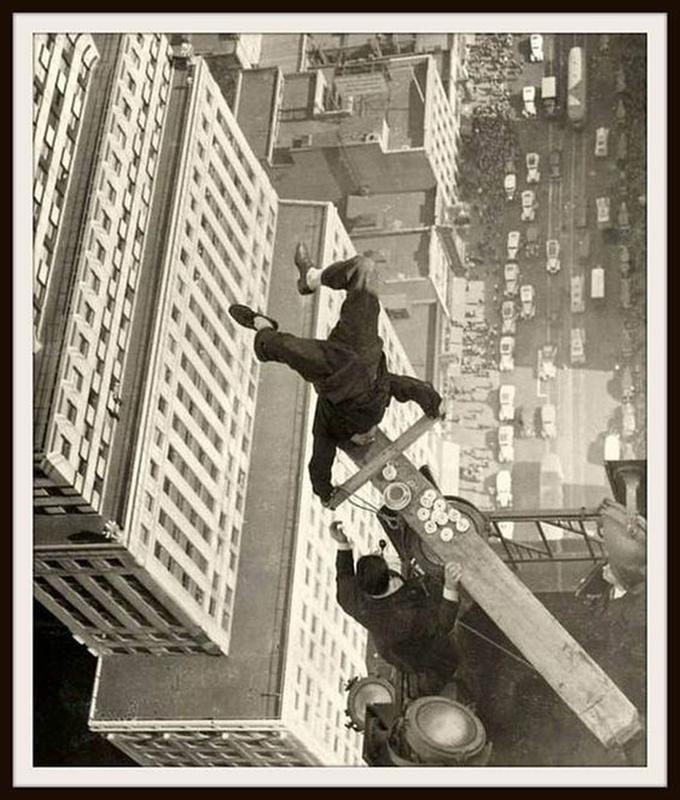
Pinterest
This job may be considered the worst choice for individuals with acrophobia. The construction worker assigned to work on skyscraper beams needs the agility and stability of a gymnast on a balance beam. They also have to constantly consider how the wind might affect their movements, taking precautions like adjusting their weight load and center of gravity. Besides the risk of falling, ironworkers on these beams have to carry heavy tools and endure extreme weather conditions, whether it be scorching heat or freezing temperatures. The range of dangers they face ranges from minor incidents like finger injuries to the obvious danger of falling.
Height wasn’t the most dangerous part of building San Francisco’s Golden Gate Bridge
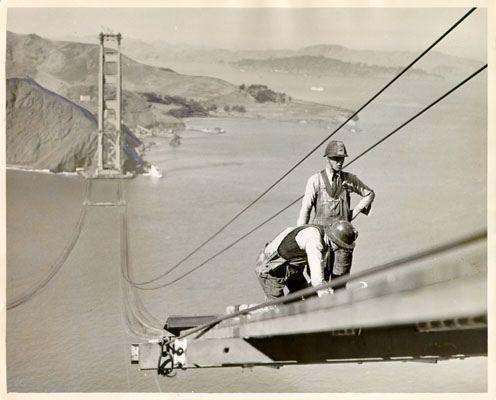
Pinterest
During the Great Depression in 1933, individuals facing extreme desperation took on risky employment opportunities, such as working on the construction of the Golden Gate Bridge. Despite challenging conditions like cold, dampness, and strong winds, workers pushed through. They worked in tight and enclosed spaces, wearing respirators to protect themselves from the hazardous fumes produced by lead-based rivets. Moreover, they were exposed to toxic fumes from the lead-based paint used to prevent corrosion on the bridge. To minimize the risk of falling, a safety net was installed, resulting in only one fatality until February 1937. Tragically, during this time, a scaffolding collapse created a hole in the safety net, causing the loss of ten lives.
Chicago Police Officer Examines Multiple Bullet Holes in 1920s Murder Scene Window

Pinterest
Police officers in cities like Chicago are well aware of the dangers they face on a daily basis in their line of work. The crime statistics in these areas are undeniably distressing, but this is not a new phenomenon. Even in the 1920s, a period often romanticized, the situation was just as dire, making the task of being a crime fighter extremely perilous. The main reason behind this was the control that the mob, specifically under the notorious figure Al Capone, had over Chicago. Capone and his gang were involved in a range of illegal activities, including alcohol and gambling, prostitution, and extortion. They would go as far as using firearms and even bombs to achieve their objectives. While some killings were random, others were deliberate and targeted, with Capone’s gang going after lawyers, newspaper reporters, police officers, and saloon owners. The intertwining of politics and organized crime during this time meant that investigations into these murders often faced a barrier of silence.
Mt. Rushmore Presidents: A Life Risked to Carve Their Legacy
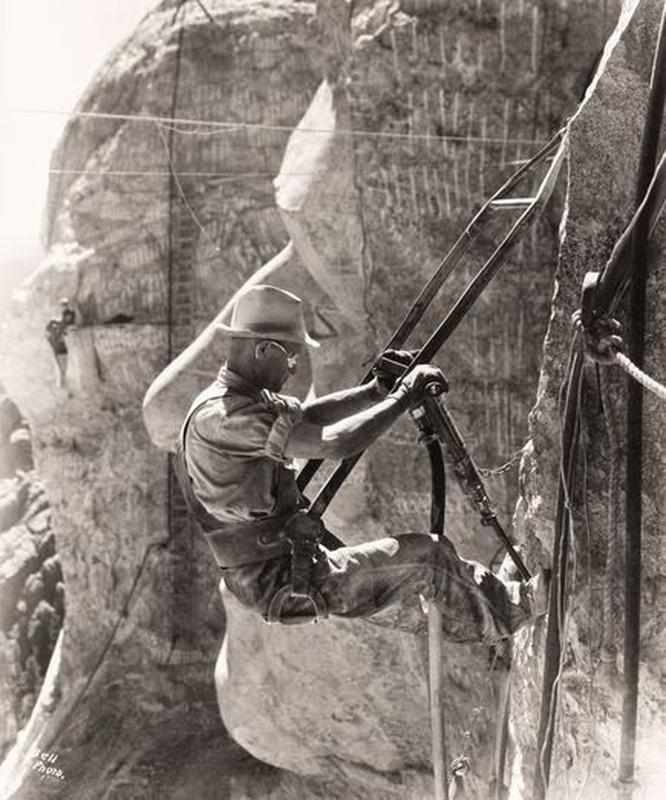
Pinterest
Truck drivers ensure they reach their destination promptly, even if it means driving overnight or navigating past sluggish Sunday drivers on the road. Nevertheless, this determination to be punctual carries potential risks, as some drivers who push themselves excessively may become victims of their own ambition to excel.
In 1940s, race car drivers resorted to cheating, risking their lives with every lap on the track
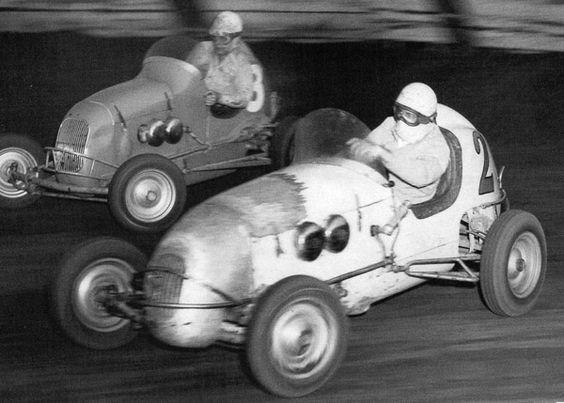
Pinterest
Driving a car at 180 mph is widely known to be risky, with the high chance of crashing. However, there are other hidden dangers involved. One such danger is the potential exposure to dangerous levels of carbon monoxide for drivers. Another risk is the increased possibility of blood clots forming in the body due to long periods of sitting without movement. It is important to note that midget cars, despite their small size and weight of only 900 pounds, can be extremely powerful, reaching up to 400 horsepower. To improve safety, these vehicles now have full roll cages and other safety features.
Manchester City detectives pause crime-solving duties to capture a moment in a photo
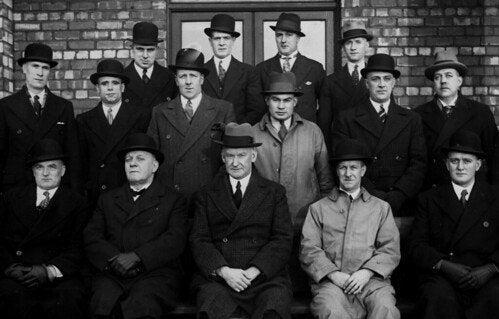
Reddit
Despite their resemblance to Chicago mobsters, this group is actually composed of the good guys. Leading the force was Constable Sir John Maxwell from the Manchester City Police, who successfully guided the force through a period of transformation by introducing forensic science labs and a police radio network. While these advancements were meant to assist the police and detectives, change often brings about stress, as most people know. Being a detective is already a dangerous profession, but Maxwell’s tenure proved to be exceptionally challenging. He served during the wartime era and eventually retired in 1942, likely due to exhaustion caused by the added responsibilities during that time.
Phyllis Latour Doyle discreetly embeds secret codes in her knitting to evade Nazi detection

Pinterest
Phyllis Latour chose to embrace a career as a spy, which is filled with danger. In 1941, she started her journey as a flight mechanic for the WAAF. When the opportunity to become a spy came, she didn’t hesitate to take on the role. Under the code name Genevieve, she spent a year in Aquitaine, fulfilling her espionage duties. Later, on May 1, 1944, she parachuted into Normandy and adopted the alias Paulette. Phyllis implemented clever tactics such as riding a bicycle and having innocent conversations with German soldiers while selling soap, all the while gathering crucial military information. To ensure her messages stayed secure, she ingeniously encoded silk strands within her knitting supplies, which she used to tie up her hair.
Brave Young Miner Jeopardizes Life to Provide for His Family
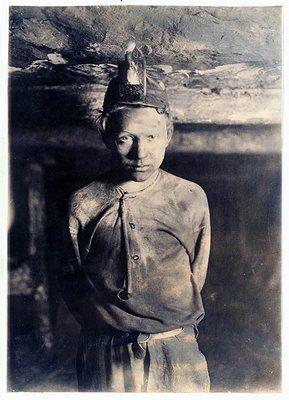
Pinterest
Coal mining has been a long-standing practice of venturing below the surface to extract coal, a crucial energy source for our lives. However, this occupation carries its own set of unique risks. In the 20th century alone, an astonishing number exceeding 100,000 coal miners lost their lives in this perilous profession. The hazards associated with mining coal are manifold and varied. Some fatalities may stem from seemingly ordinary incidents like vehicle collisions, while others are intricately connected to the nature of the job itself. Miners face dangers such as suffocation, roof collapse, gas poisoning, rock bursts, outbursts, and explosions. Even if a miner manages to survive the treacherous underground conditions, they remain vulnerable to developing black lung and other respiratory illnesses, which can significantly shorten their lifespan.
Bravery is a must for horse diving, whether performing or watching.
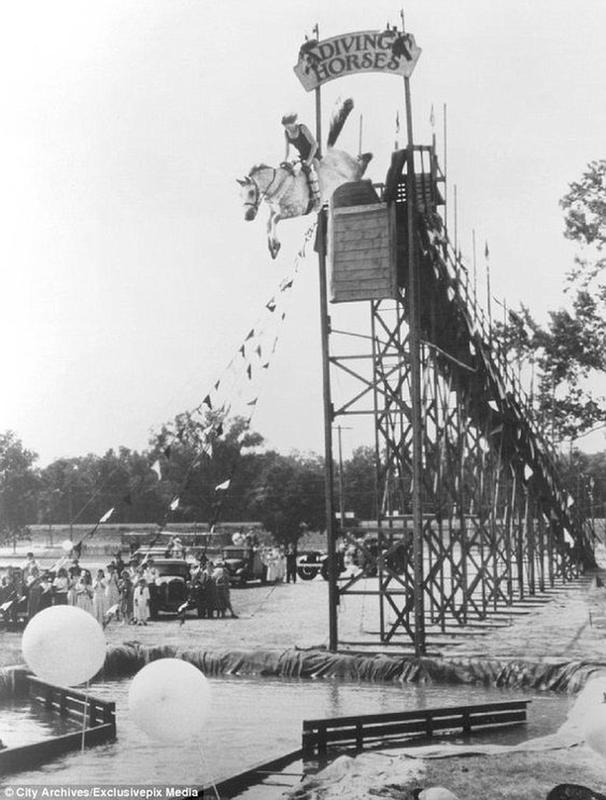
Pinterest
In a civilized world, there are dangerous jobs that are necessary for survival, distinct from those pursued for entertainment. In the middle of the 20th century, at Steel Pier in New Jersey, both men and women would engage in a daring act of diving from horses into the water below the pier, from heights of 40 to 60 feet. While there were no reported deaths, a few injuries did occur, mostly broken bones from working with the animals. However, in a peculiar incident in 1931, a rider named Sonora Carver went blind after submerging herself with her eyes open. Remarkably, she continued to perform and lived until the age of 99.
When Painting the Eiffel Tower, It’s Essential to Look Good
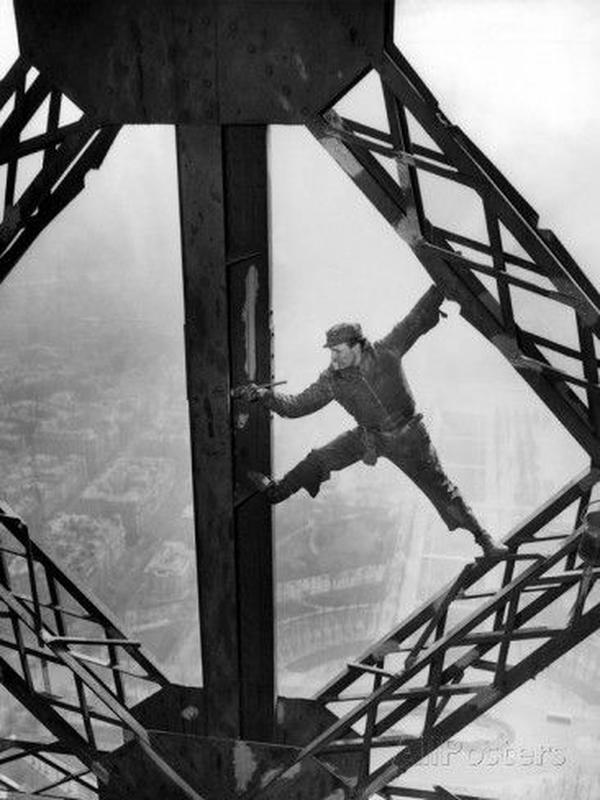
Pinterest
The Eiffel Tower’s appearance has changed over the years. Originally, it had a reddish-brown color when it first opened in 1889. However, ten years later, it was painted yellow to keep up with the latest fashion trends. Throughout its history, the tower has undergone several color changes before settling on its current shade, called Eiffel Tower Brown, which has been proudly displayed since 1968. To ensure that it stands out against the sky, the tower is painted in progressively lighter shades, consisting of three different tones. Unlike bridges that are painted for protection against rust and corrosion, the Eiffel Tower’s painting routine aims to maintain its youthful and captivating beauty. Every seven years, a massive 60 tons of paint is carefully applied to the structure. However, this task, like many others associated with the tower, is dangerous due to its towering height.
Divers in the late 19th century wore suits weighing over three times their own weight

Pinterest
In the modern era, diving presents its own set of risks, although it is much safer compared to the past. In earlier times, divers faced dangers like nitrogen narcosis, hypoxia, decompression sickness, and the very real risk of drowning. Unlike ancient methods that used diving bells, contemporary diving suits were developed to maintain surface-level pressure. These suits, known as atmospheric diving suits or ADS, were first created in 1882. The initial design was quite heavy, weighing 830 pounds, and aimed to protect divers from the harmful effects of diving, such as the bends. With these suits, divers can explore depths of up to 2000 feet. However, one major challenge during their development was incorporating movable joints. Despite efforts to adapt to changing pressures, recent data suggests that diving still carries the potential for long-term neurological damage.
John F. Kennedy’s Involvement with the Coal Country during the 1960 Campaign
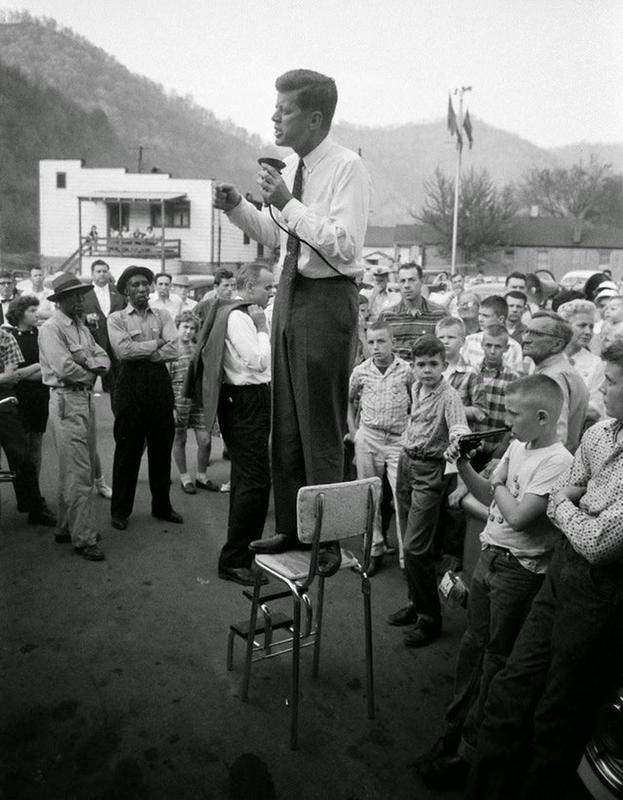
Pinterest
When discussing the most dangerous occupations, many people would likely think of professions like firefighters or police officers. However, when looking at the statistics, the job with the highest risk of death on the job is actually that of the President. Throughout history, eight Presidents have died while serving in office. This is a significant number when considering that only 45 individuals have held this prestigious position. Out of the fatalities, four Presidents were assassinated due to their role, while the other four died from natural causes. It is worth noting that two of these natural deaths may have been influenced by the stress associated with the office. In addition, one President fell ill after enduring extreme cold during a lengthy inauguration speech, leading some to speculate that he contracted typhoid from contaminated water at the White House. It is possible that the fourth President may have faced a similar fate.
Firefighters from the 1980s in dire need of water
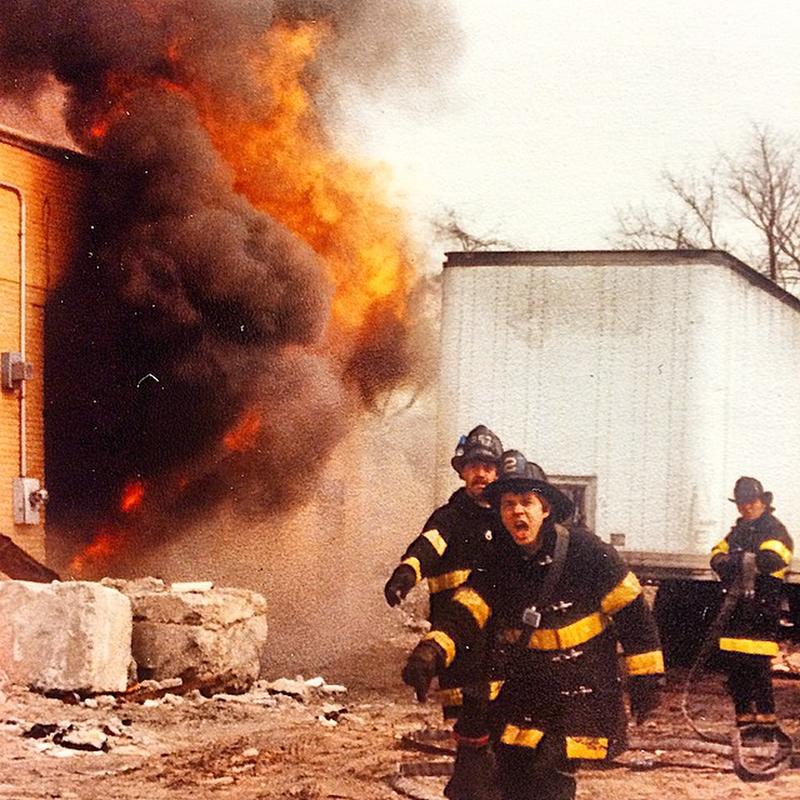
Pinterest
Firefighters face the constant uncertainty of encountering a life-threatening fire every time they go to work, putting their lives at risk. This is a challenge they have been conquering for generations, but it was in the late 20th century that their heroic acts began to be extensively documented. The photo clearly depicts the intense stress felt by these firefighters as they desperately call for water, but this is a situation they are accustomed to.
Two excited fishermen eagerly await their sea departure with strong determination

Pinterest
The life of a fisherman in the early 20th century was far from glamorous. It involved waking up early, tackling unpredictable seas and weather conditions. These men pursued this occupation not for fashion, but out of sheer necessity to provide for their families. Whether times were prosperous or difficult, they would rise before the sun, hoping for a successful catch. Being a fisherman required enduring both favorable and unfavorable circumstances. Sadly, many lost their lives in treacherous waters, yet there was no space for complaints as this was simply the reality they faced every day.
While a Navy SEAL was boarding a ship, what were you doing today?
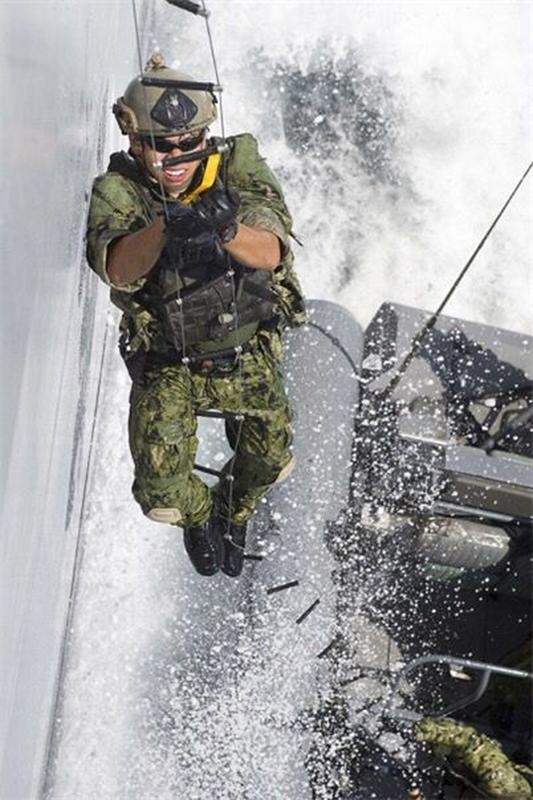
Pinterest
The primary special operations force of the Navy is the Navy SEALs. To become a SEAL, candidates must undergo rigorous physical training and pass a difficult physical test. The duties of SEALs include dealing with dangerous situations like piracy, terrorism, and other threats by boarding ships. During this process, they follow visit, board, search, and seizure protocol, and use a three-wave rappelling strategy for boarding. The first wave provides cover fire to protect the following waves. In addition, they are responsible for securing the perimeter of the boat using helicopters and boats. These measures are crucial to ensure the safety of the SEALs as they carry out their missions, as they encounter significant risks from enemy fire.
The chilling terror of space is equal to the awe-inspiring beauty it holds
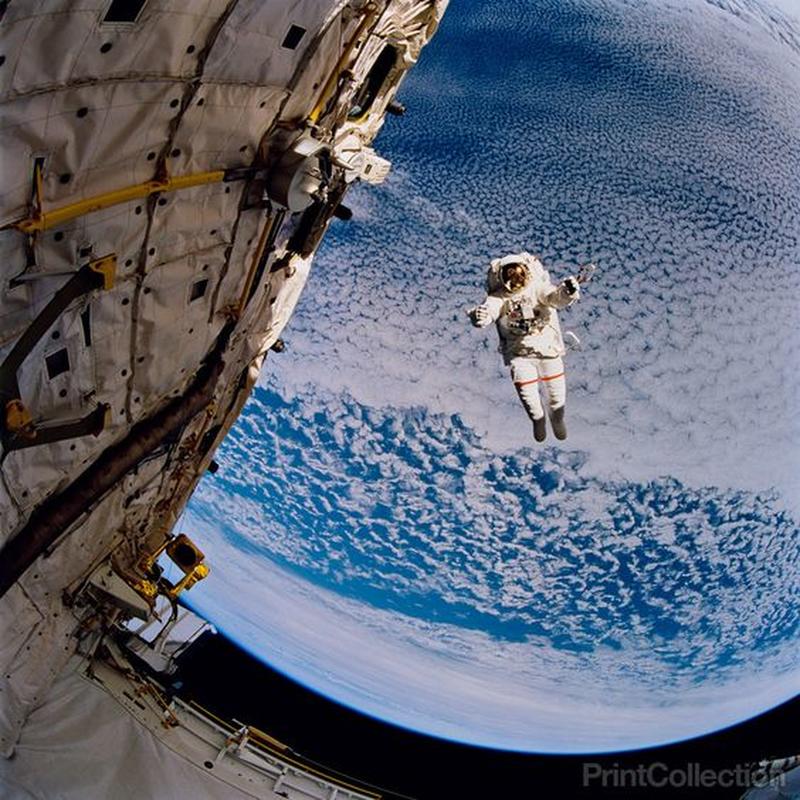
Pinterest
The majority of people do not face the dangers that astronauts encounter. One particular danger involves losing physical contact with the spacecraft while in space. Given the conditions of space, it would be extremely difficult to regain access to the ship without assistance. To address this issue, SAFER was developed as a self-rescue mechanism for astronauts who become detached from the vehicle during a spacewalk and have no other rescue options available. Acting like a backpack system, SAFER operates similarly to a jetpack. Thankfully, no astronauts have had to use this device up to this point, but it is always better to prioritize safety rather than relying on luck.
The ‘Kiss of Death’: Weavers’ Hazardous and Unhygienic Practice of Sucking Thread through Shuttle’s Eye Endangers Lives
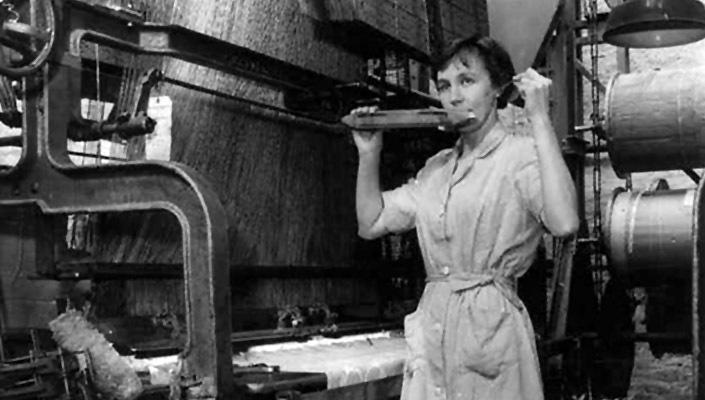
Pinterest
Initially, the kiss of death was not considered a threat in textile mills. Weavers used a tool called a shuttle, which held the thread in a pirn. To pull the thread through, they would use their breath. This was seen as harmless until the late 19th Century, when consumption, a deadly disease, started claiming lives. Weavers began dying at a higher rate than the general population. A German bacteriologist made a groundbreaking discovery, identifying the bacteria responsible for the disease. It was then realized that even a single infected worker could start an outbreak in a factory. Although factories began using metal needles to prevent the disease from spreading, some still practiced the kiss of death until Massachusetts passed a law.
More From History + Heritage
-


Hidden Truths: Rare Photos Exposing History’s Untold Stories
-


Thought-Provoking Treasures: Rare and Revealing Photos that Challenge History
-
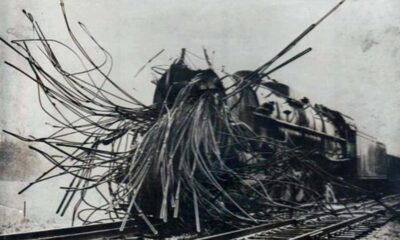

History’s Creepiest Pictures and Their Chilling Backstories
-


Eerie Abandonment: 63 Chilling Photos of Forgotten Places
-


Nostalgic Fast Food: 30 Iconic Items from the ’80s and…
-


Surprising Encounters: Chilling Historical Discoveries in Unexpected Photos
-
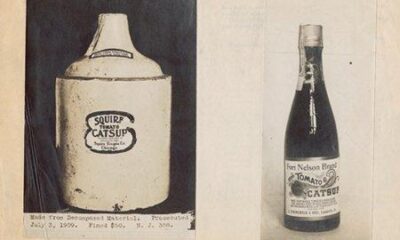

Unbelievable History Facts: 30 Weirdest Random Tidbits
-


Forgotten ’90s Events: 60 Things That Slipped from Memory
-


Reimagining the Past: Colorized Photos with Fresh Perspectives
-


Unseen Wonders: Jaw-Dropping Historical Photos Beyond Imagination
-


Unseen Perspectives: Captivating Photos that Shift Historical Paradigms
